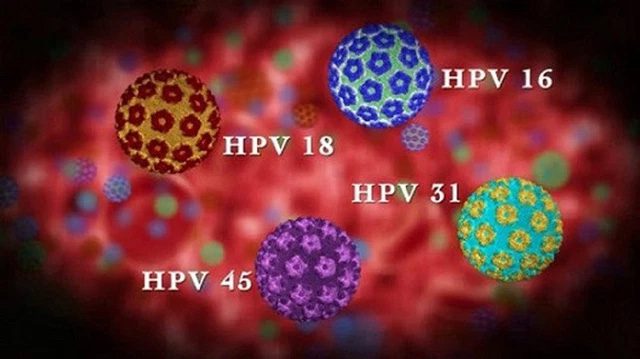HPV is a very common sexually transmitted infection. Some types of the HPV virus can cause genital warts or even cancer.
Anyone who is sexually active can contract the human papillomavirus (HPV), even if they have only one partner.
HPV is a widely prevalent sexually transmitted infection. While it is common, not everyone fully understands it, leading to various misconceptions.
What is HPV?
According to Professor Nguyen Tran Hien, former President of the Vietnam Society of Preventive Medicine, there are currently over 100 identified strains of HPV. Depending on their potential to cause cancer, these strains are divided into two groups. Low-risk HPV strains only cause warts on the hands and feet, anal and genital warts, respiratory papillomatosis, or epithelial hyperplasia in the oral cavity. High-risk HPV strains, of which there are about 15, can lead to cervical cancer and other types of cancer.

There are many strains of HPV, and not all of them cause cancer.
The primary entry and localization point for HPV is the epidermis, mainly within the epithelial layers of the skin and moist mucous membranes. The average transmission rate of HPV between men and women through sexual intercourse is about 40%.
Transmission Routes of HPV
Many people ask, “Is HPV contagious?” or “How is HPV transmitted?” Regarding this issue, Dr. Huynh Thi Hien – a Specialist II in Obstetrics and Gynecology at Vinmec International General Hospital, states that HPV spreads through skin-to-skin contact. You can contract HPV through direct sexual intercourse via the vagina, anus, or mouth with someone who is infected.
The most common route of HPV transmission is through the vaginal or anal route. HPV can be transmitted even if the infected person shows no signs or symptoms.
Individuals who are sexually active face a higher risk of contracting HPV if they:
- Engage in sexual activity at a young age;
- Have cuts or abrasions on the genital skin;
- Have multiple sexual partners;
- Have a partner who has had multiple previous partners.
All sexually active individuals can be infected with HPV, even if they only engage in sexual activity with one partner. Sometimes, symptoms may develop years after having sexual relations with an infected person. This makes it challenging to determine the exact timing of the infection.
Moreover, it is not necessary to have actual sexual intercourse to contract HPV, as this virus can spread through skin contact in the genital area.
Therefore, even same-sex, bisexual, or heterosexual couples can contract HPV if their partner is infected.
According to statistics from the United States, a gay or bisexual man is at a higher risk of developing anal cancer compared to a heterosexual man, with a risk increase of up to 17 times. Each year, around 2,000 men in the U.S. are diagnosed with new cancers related to HPV.
Common Misconceptions About HPV
- Only women can get HPV: The truth is that both genders can be infected with HPV. According to the Centers for Disease Control and Prevention (CDC), most sexually active men and women will be infected with HPV at some point in their lives. Anyone who is sexually active can contract HPV, even if they only have one partner.
- People infected with HPV always show symptoms: The reality is that most people infected with HPV do not exhibit any symptoms. Although there are various potential health issues related to this virus, such as genital warts and certain types of cancer, the majority of individuals do not experience health problems due to HPV infection. According to the CDC, in 90% of HPV infections, the immune system clears the virus within two years.
- There are effective treatment options for HPV: The truth is that healthcare professionals can treat pre-cancerous lesions and genital warts caused by HPV, but there is no treatment that targets the virus itself.
- HPV can be transmitted through toilets: It is important to note that a person cannot contract HPV through toilets; hugging or shaking hands; poor hygiene; sharing food or utensils; swimming together in a pool or hot tub; or genetic factors.
Elon Musk reveals about life on Mars: “Dangerous, cramped, difficult”

















































